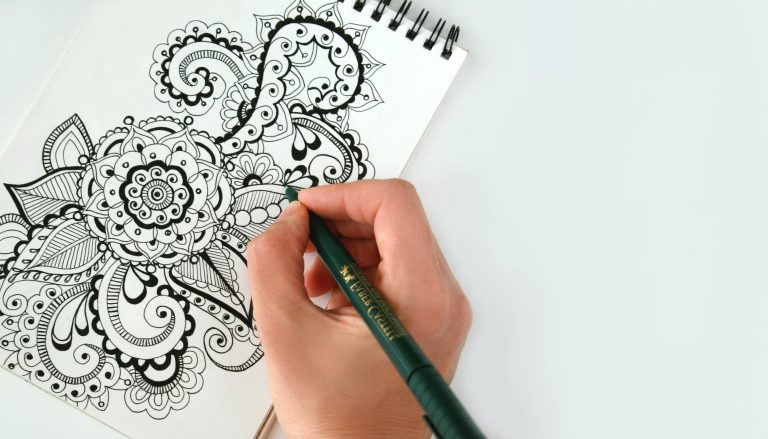The Science Behind Aesthetic Videos: Why We Love Visual Loops
Satisfying videos are everywhere—from slime squishes and soap carvings to looping pastel room tours and mirror-cleaning clips. These seemingly simple visuals rack up millions of views, likes, and shares across platforms. But have you ever stopped to wonder why your brain can’t look away?
These “aesthetic videos” do more than please the eye—they actually soothe the mind. Let’s dive into the psychology behind visual loops and why they’ve become such a powerful digital coping tool for so many people.
What Are Aesthetic Visual Loops?
Visual loops are short, repetitive videos that create a sense of symmetry, rhythm, and resolution. The content is often minimal, focused, and features relaxing audio, such as soft music, ambient sound, or no sound at all. These loops typically highlight:
- Cleaning or organizing
- Artistic creation (like painting or pouring)
- Slow motion movements
- Color gradients or satisfying symmetry
- Repetitive gestures (pouring, slicing, stirring)
In psychology terms, these videos trigger sensorimotor relaxation—a response where the brain shifts into a state of passive observation, reducing mental noise and promoting calm.
Why Our Brains Love Repetition
The brain loves predictability. When we watch something loop over and over, the repetition gives the mind a chance to rest. There’s no need to guess what comes next—your brain already knows. This sense of visual rhythm makes you feel:
- Safe (because there’s no surprise or threat)
- In control (because you can anticipate the ending)
- Satisfied (because the action finishes cleanly or perfectly)
This loop of comfort and closure is why many people watch the same clip over and over—and why it never gets old.
Visual ASMR: Aesthetic Satisfaction Without Sound
While most people associate ASMR (Autonomous Sensory Meridian Response) with whispering and tapping sounds, there’s also a visual ASMR category. These include things like:
- Paint spreading evenly on a canvas
- Powder being poured into symmetrical shapes
- Slime or putty slowly stretching or folding
- Time-lapse cleaning videos
These visuals produce a tingling or deeply satisfying emotional response for many viewers, even in the absence of sound. It’s a gentle, visual form of stress relief that requires no mental effort.
The Role of Color and Texture
Color psychology plays a huge role in aesthetic videos. Most of the popular visuals use:
- Pastels: calming, safe, and soft
- Neutrals: clean, minimal, and grounding
- Gradients: smooth transitions that mimic nature (like sunsets or ocean waves)
Textures also matter. Whether it’s foamy soap, crunchy clay, or velvety slime, the visual texture gives our brain something satisfying to interpret. Watching smoothness or softness in action can simulate a tactile response, which is why these videos often feel almost physical.
Emotional Regulation and Dopamine Release
There’s a neurological reason these visuals feel so good: they can lead to micro-dopamine hits. Dopamine is the neurotransmitter associated with reward, pleasure, and motivation. Every time you watch something “complete” (like a surface being cleaned or a color being poured perfectly), your brain receives a tiny dopamine release, reinforcing the behavior.
This release helps regulate emotions and can reduce feelings of anxiety, boredom, and stress, which explains why aesthetic loops are often used during study breaks, bedtime routines, or moments of overwhelm.
Why Loops Are Especially Comforting in a Digital Age
In a world filled with constant updates, messy newsfeeds, and emotional overload, aesthetic loops offer something rare: closure. Watching a perfectly folded towel or symmetrical cake being decorated gives your mind a clear beginning, middle, and end. It’s a moment of visual resolution in a world that often feels chaotic.
For many, this becomes a form of visual meditation. It requires no response, no energy, and no emotional input. You can simply sit back and let your brain breathe.
How to Incorporate Aesthetic Loops Into Your Day
If you want to intentionally use these visuals for emotional regulation or creative inspiration, here are a few easy ways:
1. Create a “Visual Calm” Playlist
Collect your favorite loop videos (from TikTok, Pinterest, or YouTube Shorts) and watch them during stressful moments, transitions, or your evening wind-down.
2. Add Visual Loops to Your Workspace
Use looping visuals as your background screensaver or digital frame content to subtly support focus and calm during the day.
3. Make Your Own
If you’re a creator, experiment with filming your own visual loops. Try painting smooth strokes, organizing a drawer, or layering colorful ingredients for soothing content.
4. Use Loops as Mindful Breaks
Instead of doom-scrolling, take 2–3 minutes to watch a loop that gives your mind visual clarity. Think of it as a “mini mental reset.”
Final Thoughts
Aesthetic loops are more than just digital eye candy. They give us structure, repetition, and resolution—three things the brain naturally craves. Whether you’re watching smooth color pours, perfect folds, or slow squishes, each loop offers a brief moment of relief from the mental clutter of everyday life.
In a world that rarely slows down, aesthetic visuals remind us that calm can be found in the simplest forms—one loop at a time.
For more ways to slow down and reset, keep coming back to SootheSync.






